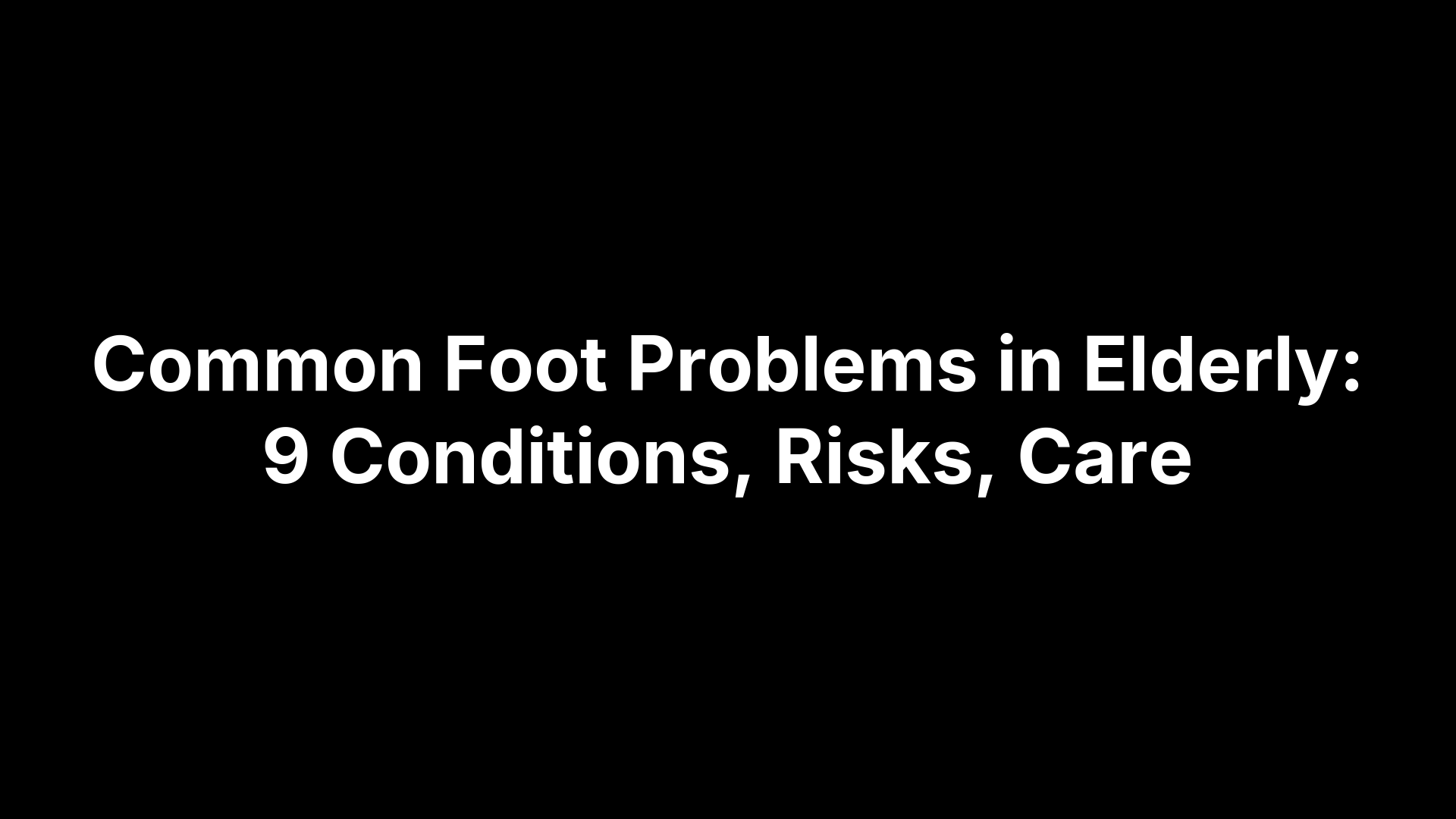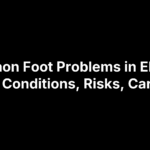Patient-centered care is a way of delivering health care that starts with you—not the diagnosis. It means clinicians treat you as a partner, respect your goals and values, and tailor plans to your life, resources, and preferences. Information is shared clearly, decisions are made together, care is coordinated across providers and settings, and safety and comfort are priorities at every step. Success is judged not just by lab results or imaging, but by outcomes you report—how you function, feel, and live.
In this guide, you’ll find a plain-language definition, the core principles behind patient-centered care, and the key elements endorsed by the Institute of Medicine. We’ll explain how it compares with “person-centered” care, why it improves outcomes and value, and what shared decision-making looks like in practice. You’ll see concrete communication and coordination habits, how patient-reported outcomes are measured, and everyday examples—from primary care to foot and ankle treatment. We’ll also outline practical steps clinics can take, common barriers, and workable solutions, then close with clear takeaways you can use right away.
Core principles of patient-centered care
Across respected frameworks (e.g., the Picker Institute and national health agencies), the patient-centered care definition translates into a consistent set of behaviors that put the individual first. These principles guide how teams listen, plan, and deliver care that fits a person’s goals, context, and preferences.
- Respect for preferences and values: Care plans reflect what matters most to the patient.
- Transparent communication and education: Clear information that supports self-care and informed choices.
- Empathy and emotional support: Address fear, uncertainty, and stress.
- Timely access and responsiveness: Help when it’s needed, without unnecessary delay.
- Continuity and smooth transitions: Coordinated handoffs across settings and providers.
- Family/caregiver involvement (as desired): Support the patient’s chosen circle.
- Whole-person focus: Consider social, cultural, financial, and environmental needs.
- Safety and dignity: Advocate for care that is effective, safe, and respectful.
Key elements endorsed by the IOM
The Institute of Medicine (now the National Academy of Medicine) translated patient-centered care into six practical elements that teams can apply at the bedside and in clinics. These elements anchor the patient-centered care definition in daily practice and measurement. It remains the field’s most widely cited framework.
- Respect for values, preferences, and expressed needs: align plans with what matters to the patient.
- Coordination and integration of care: seamless across settings and clinicians.
- Information, communication, and education: clear, actionable guidance.
- Physical comfort: pain control and supportive environments.
- Emotional support: relieve fear, anxiety, and uncertainty.
- Involvement of family and friends: include the support network as desired.
Patient-centered vs person-centered: what’s the difference?
You’ll see these terms used interchangeably, and the core intent is the same: care shaped by the individual’s goals and values. “Patient-centered” is rooted in the clinical encounter—plans and outcomes tied to health needs and shared decisions. “Person-centered,” as CMS defines it, goes broader: integrated services across physical, behavioral, and social needs, measured by patient-reported outcomes and coordinated over time. In this guide, we use “patient-centered” while embracing that broader person-centered lens.
Why it matters: outcomes, experience, and value
The patient-centered care definition matters because when care starts with patients’ goals and context, they participate more, understand their options, and stick with agreed plans. Studies link this approach to higher satisfaction, better adherence, and improved clinical outcomes. Coordinated, continuous relationships help detect issues earlier, smooth transitions, and reduce delays and errors. Measuring success by patient-reported outcomes and experience aligns care with what matters most while supporting value-based payment.
- Better outcomes and safety: Higher satisfaction, adherence, and effectiveness.
- Smarter use of resources: Prioritizes simpler options; avoids unnecessary tests and referrals.
- Stronger trust and relationships: Clear communication and empathy reduce fear and uncertainty.
Shared decision-making and informed consent in practice
Shared decision-making is how the patient-centered care definition shows up in real visits: clinicians and patients co-create a plan by pairing the best evidence with the patient’s goals, values, and life circumstances. Informed consent is the ethical guardrail for that process—more than a signature, it’s an understandable, two-way conversation that confirms choices are voluntary and aligned with what matters most.
- Frame the decision: Clarify the problem and the patient’s goals.
- Present options and trade-offs: Benefits, risks, uncertainties, and reasonable alternatives (including watchful waiting).
- Elicit preferences and context: Values, cultural beliefs, daily demands, and financial factors.
- Check understanding: Use plain language and a teach-back.
- Agree and plan: Set next steps and what to monitor.
- Document consent and follow up: Record the discussion; revisit as conditions or preferences change.
Communication, empathy, and cultural humility that build trust
Trust grows when clinicians communicate clearly, show empathy, and practice cultural humility. Patient-centered communication uses plain language, invites questions, and treats the patient’s experience as expertise. Empathy eases fear; humility keeps us curious about values, beliefs, and context so plans fit real life.
- Use plain language and teach-back: explain options simply; have patients restate plans.
- Listen and validate: begin with the patient’s story; reflect feelings; confirm priorities.
- Practice cultural humility: ask about values, language, and decision-makers; use qualified interpreters.
- Show empathy in action: name the emotion, offer support, fit the plan to daily life.
Coordinated, continuous care across teams and settings
Patient-centered care doesn’t stop at the clinic door—it depends on coordination and continuity across teams, specialties, and settings. Integrated care means everyone shares the same goals, information moves with the patient, and handoffs are proactive, not passive. That reduces delays, prevents errors, and keeps plans aligned with the patient’s life between visits, hospitalizations, rehabilitation, and home.
- Shared care plan: accessible to all clinicians and the patient.
- Single point of contact: for questions and next steps.
- Proactive follow-up: after transitions with medication reconciliation.
Measuring what matters: patient-reported outcomes and experience
To honor the patient-centered care definition, teams measure what patients say matters. That means tracking patient-reported outcomes (PROs) and patient experience, alongside labs and imaging. CMS emphasizes success measured by patient-reported outcomes, and IOM elements signal experience domains worth monitoring.
- Outcomes: pain, mobility, function, symptom burden, and ability to do daily activities.
- Experience: clarity of information, respect and involvement in decisions, coordination and transitions, timely access, emotional support, and physical comfort.
- Use the data: review PROs at each visit, adjust plans, trigger follow-ups after transitions, and drive quality improvement.
Everyday examples you can recognize in care
Patient-centered care shows up in small, practical moments you can spot in any clinic. It’s how teams honor your goals, reduce friction, and stay connected between visits. Here’s the patient-centered care definition translated into everyday experiences you’ll recognize.
- Flexible visiting hours: you choose who visits and when after a procedure.
- Telehealth follow-up: explores goals and contributors, then plans next steps together.
- Personalized pain control: a tailored plan plus recovery check-ins—not just discharge.
- Shared care plan: visible to you and your team, with one contact for questions.
- Patient-reported outcomes: quick surveys on pain and function to guide care.
Patient-centered examples in foot and ankle care
In foot and ankle care, patient-centered means plans that match your goals—standing at work, returning to sport, or protecting a diabetic foot—plus clear options, realistic timelines, and coordination across clinic, surgery, rehab, and home.
- Shared bunion choices: shoes/orthotics/PT vs surgery; align downtime.
- Plantar fasciitis: exercises, inserts, night splints; portal check-ins.
- Ankle sprain: same-day care, brace selection, PT, return-to-play.
- Diabetic ulcers: offloading, wound care, footwear, vascular checks, frequent follow-ups.
- Targeted injections: ultrasound/fluoroscopy guidance; risks and alternatives discussed.
Putting patient-centered care into action in clinics
Translating the patient-centered care definition into daily practice means hardwiring routines that start with goals, communicate clearly, and coordinate seamlessly. Build reliable systems for access, language services, and follow-up, and use patient-reported outcomes to adjust care in real time. Then learn from the data and improve together.
- Begin with goals: open visits by asking what matters most.
- Use shared decision aids: present options, risks, and likely trade-offs.
- Teach-back every time: confirm understanding and next steps in plain language.
- Coordinate care: one point of contact and a shared care plan.
- Follow up proactively: after tests, referrals, procedures, and transitions.
- Track PROs routinely: pain, function, and daily activity to guide care.
- Ensure equitable access: qualified interpreters, culturally responsive materials, telehealth, and same-day options.
Common challenges and how to overcome them
Even well‑intended teams run into barriers that make patient-centered care hard to deliver day to day. Time pressure, fragmented systems, communication gaps, and inequities can derail shared decisions and smooth transitions. The fix isn’t heroics but reliable workflows that hardwire listening, coordination, and follow-up—and make it easier for patients to participate.
- Time constraints: Use pre-visit questionnaires/PROs, set a brief visit agenda, and share tasks across the care team.
- Fragmented care and data silos: Maintain a shared care plan, assign a single point of contact, and standardize handoffs.
- Language and health literacy: Offer qualified interpreters, plain-language materials, and a routine teach-back.
- Cultural and economic barriers: Train for cultural humility, screen social needs, connect to community resources.
- Burnout and change fatigue: Provide leadership support, short daily huddles, feedback loops, and celebrate small wins.
Key takeaways
Patient-centered care means your goals, values, and life circumstances shape every clinical decision. It relies on clear communication, shared decisions, coordinated handoffs, and measuring what matters to you—not just labs and images. National frameworks (IOM and CMS) reinforce these elements and link them to better satisfaction, adherence, outcomes, and value.
- Start with what matters: goals, values, and preferences first.
- Decide together: shared decision-making and meaningful informed consent.
- Communicate clearly: plain language, teach-back, and empathy.
- Coordinate care: one plan, one contact, proactive follow-up.
- Ensure continuity: smooth transitions across settings and teams.
- Measure what matters: patient-reported outcomes and experience guide care.
If you want foot and ankle care built on these principles, connect with the team at Achilles Foot and Ankle Center.






